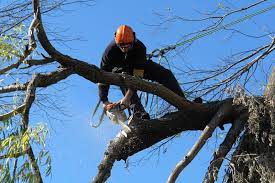Protect Your Plant And Tree With Tree Pruning
Pruning is the most common tree maintenance procedure. Unlike forest trees, landscape trees require a higher level of care to maintain structural integrity and aesthetics. Tree pruning should be done to understand tree biology because improper pruning can cause lasting damage or shorten the tree's life.
Every felling can change the tree's growth; therefore, it is essential to remember that no branches should be cut for any reason. Some common reasons for tree pruning include removing dead branches to improve the shape and increase safety, increasing light and air penetration of plants under the canopy, or taking corrective and preventive measures.
When to prune
· The lightest routine pruning can be done at any time of the year to remove weak branches, dead branches, and diseased branches with little impact on the tree.
· As a general rule, if pruning is done before spring growth, growth and wound closure will be maximized. Avoid extensive pruning of living tissue immediately after spring growth, especially on weak trees.
· Tree diseases, such as oak blight, can be spread when pruning wounds provide pathogenic factors. Therefore, susceptible trees should not be pruned during periods of active transmission.
· If you are unsure when to trim, contact your local arborist. The professional team will assist you get the best service.
Pruning Techniques
Certain types of pruning may be necessary to keep mature trees in a healthy, safe, and attractive condition.
Cleansing removes dead, dying, diseased, weakly adherent, low vigor branches from the canopy.
Elevation removes lower tree limbs to provide space for buildings, vehicles, pedestrians, and perspectives. In addition, the reduction reduces the size of the tree and is generally used for cleaning utility lines. The best way to reduce the height or spread of the tree is by trimming the leader and ends of the branches until the secondary branches are large enough to take on the role of the future. Compared to topping, shortening helps maintain the shape and structural integrity of the tree.
Reduces the density of the leaves around the canopy, becomes thinner, sometimes increases the penetration of wind or light for aesthetic reasons, and favors the development of internal leaves.
The benefits of pruning
Promotes plant health
Pruning removes dead and dying branches, leaving room for new growth and protecting your property and bystanders from damage. It can also prevent pests and animal infestation and promote the natural form and healthy development of plants.
Plant and landscape maintenance
Tree pruning promotes healthy fruit and flower production in trees and shrubs. For the farm or residential owner, regular tree pruning can develop the aesthetics of the hedge and maintain the proportion and density of evergreen trees. This maintenance supports the planned design and appearance of your property by controlling the size and shape of the plants.
Protect your family and property
· Regular pruning can reduce the risk of storm damage due to broken branches. In addition, protect your family and friends from falling branches from walkways, driveways, and children’s play areas. This approach also helps control pests, pests, and snakes by reducing habitat selection.
· When you remove the old branches, you give the trees the green light, allowing them to produce healthy new growth.
· Train trees to grow according to your wishes so that branches do not hang from the ceiling or protrude between cables.
Gives trees a clean, polished appearance, enhancing your entire landscape. Timely tree pruning will bring the best version of trees; you will stay protected and keep your family safe in an effective manner. Choose the right service provider to get you tree pruning service with an ease.

Comments
Post a Comment